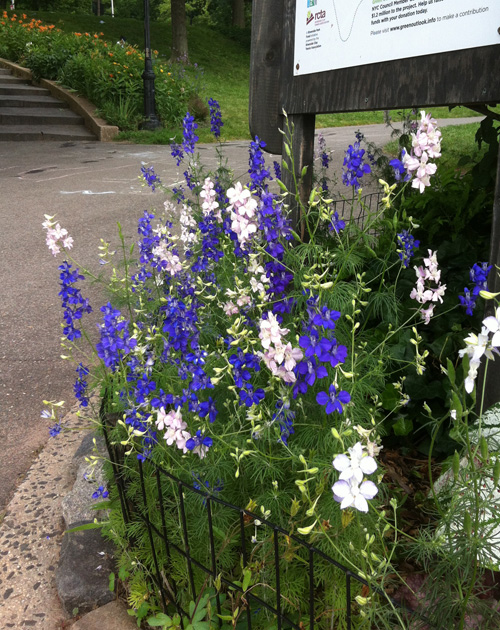What an electric patch of bee balm (Monarda) I passed in Riverside Park. It took me by surprise because it was rooted in shallow soil on a rocky slope — showy red cultivars generally bloom best in wetter places.
The lower right corner of the photo may reveal its secret — water leeching along the rocky escarpment. With the ten-plus inches of rain we've had in June, the roots are probably sucking up ample moisture at the stone's surface.
Bee balm in Riverside Park near 99th Street.





